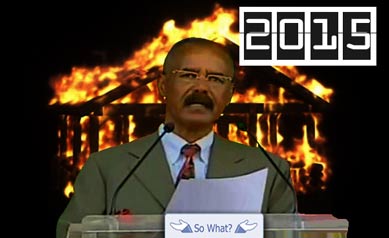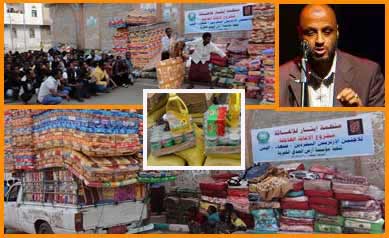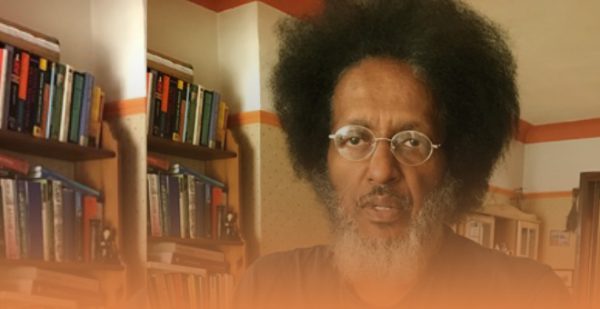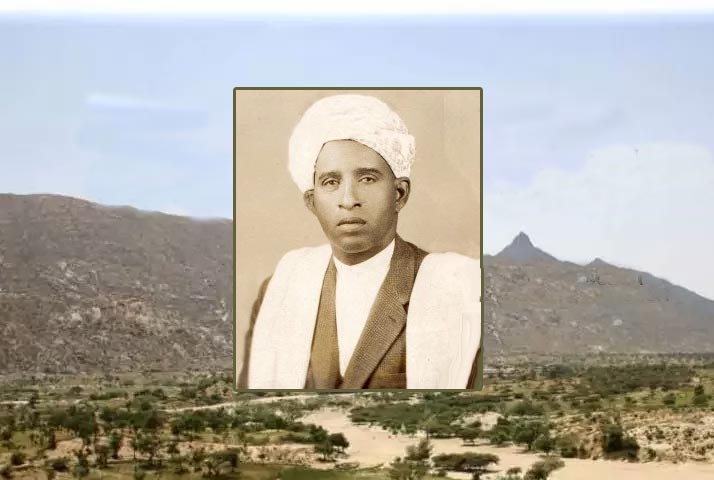On Eritrea’s Independence Day Ten Years Ago

On May 28, 2005, on the occasion of Eritreans Independence Day anniversary, the following editorial appeared on awate.com under the title, “The Hidden Picture of Eritrea Under PFDJ” What has changed, or what will change under the current Eritrean rulers is everybody’s guess. But this may help to remind people what the issues were ten-years ago, and what the issues are today.
Every day, through the magic of media monopoly, the PFDJ paints colorful drawings of Eritrea. They are much like children’s crayon drawings: they bear little resemblance to the real thing but just as we would look with kindness at a children’s drawing (because they are children, after all), we are supposed to appreciate the PFDJ’s drawings (because they are our “liberators” after all!) Every day, the state-TV shows reels and reels of films of a nation on a march: roads paved, wells dug, hospitals built, and ministers on an airport tarmac greeting the maestro who makes it all possible. Thus, when the maestro takes to the stage, as he does on every occasion, it is no surprise that he would use the opportunity to provide further distortions.
We will not analyze Isaias Afwerki’s Independence Day speech because it has no new information or insight: it is the same formula of empty promises, excuses for the many failures, and self-congratulation for the petty “successes.” (We challenge anyone to find any substantial difference between his address of 2002-2005.) The only cliff-hanger is who would be the new scapegoat to be added to the long litany of enemies.
This year, the “Orthodox Church reformers” joined their brethren previously classified in the enemy camp which includes greedy merchants, the corrupt civil servants, the spoiled students, the jihadists Muslims, the illegal minority religion adherents and the combatants who want a sheep slaughtered every Thursday.
The formulaic speech also includes one more feature: a stubborn refusal to acknowledge, much less address, that Eritrea is going through a major crisis. This is not accidental: acknowledgement leads to action, and action has consequences which may not necessarily be predicted. A person who knows for certain that he or she is guilty of a major crime is least likely to call for an investigation of the crime. He would rather talk about anything else—except the crime. Similarly, the PFDJ leadership, which must know for a fact that it has caused, or shares major responsibility in the cause of, Eritrea’s current crisis is not willing to broach the subject. Its strategy seems to be not to solve the crisis but to “outgrow it” by (a) totally disabling the accusers (either by discrediting us or waiting for us to die) or (2) totally changing the people’s quality of life so dramatically, that they will forgive and forget and move on. In other words, the PFDJ hopes to use on the Eritrean people the same strategy it used on the members of the other fronts and organizations: waiting for (and, in some cases, bringing about) the death of the influential figures of their competition and then delivering something so magical—INDEPENDENCE—that everything pales in comparison.
The next magic act that was supposed to trigger the forgive-and-forget mood was DEMARCATION. The demarcation of the Eritrea-Ethiopia border was to be the substitute for INDEPENDENCE and, in fact, the PFDJ did everything in its power to recreate that parallel: (1) the TPLF, their former best friend, was given a new garb as if it were an occupying Ethiopian force indistinguishable from the Derg and Haile Selasse; (2) Tigrayans replaced the Amhara as the new “chauvinists” and “blood enemies of Eritreans”; (3) revolutionary era songs were brought back to life or mimicked by a new generation of artists (actually, government employees); (4) the 1998-2000 war, which had been described as border or economic war, was now described as a war against occupation and, lastly, (5) the “everybody-hates-us-we-are-on-our-own” spirit was brought back.
From PFDJ’s standpoint, this strategy of escalation is a no-lose proposition: if the border is not demarcated, then it vindicates their view that this is really comparable to the Armed Struggle and we should not be surprised that it takes a long time to achieve. If the border is demarcated, then it is another win for the indomitable PFDJ and since DEMARCATION is, according to them, a second INDEPENDENCE, then they expect an all-is-forgiven ticket from the people.
It is unfortunate that many in the opposition do not seem to have thought this through and they have convinced themselves that Eritrea’s lack of having a demarcated border and Ethiopia’s reluctance to abide by the Algiers Agreement is as hazardous to Eritreans, if not more so, than PFDJ’s enslavement of the people. The PFDJ, with or without a demarcated border, is, was and will remain an authoritarian organization.
The second re-enactment from the Armed Struggle era is PFDJ’s strategy of “outlasting” its critics—by ostracizing them, discrediting them, buying them off with titles or causing/waiting for their demise. However, barring exceptions, these combinations of threats and inducements will not be as effective as they were during the armed struggle because information is now more abundant and more easily deliverable. The fawning Western media has been turned off by the PFDJ and the Eritrean dissidents have new ways (unavailable during the armed struggle) of delivering their message directly to the people.
This is where people like us come in: to provide timely and accurate information that contradicts the crayon pictures of the PFDJ. Here below is a summary of key statistics that shows, conclusively and notwithstanding all the fibs, exaggerations, empty promises, excuses and omissions conducted by Isaias Afwerki, Eritrea is very badly governed. We will show here that the PFDJ and Isaias Afwerki are not fit to govern not only because they do not have the consent of the people but also on the grounds of incompetence. We will show that Isaias Afwerki has been woefully negligent of his duties: not only as a commander in chief (when he lost 20% of Eritrea) but also in his role as Chancellor of the University of Asmara (state of education); President (head of state) and PFDJ Chairman (head of the single “legal party” in Eritrea.) And, unlike Isaias and PFDJ, we will not tell you “trust us”, but we will give you sources for our information.
| Category | Value/Source | World Rank | Comment |
| 1. GOVERNANCE | |||
| (a) Freedom House: Political Rights | 7 of 7 | Not Free | Cited for “Worst of the Worst” |
| (b) Freedom House: Civil Liberties | 6 of 7 | Not Free | Cited for “Worst of the Worst” |
| (c)Freedom House: Press Release | Not Free | Excerpt from Press Release: Of the 49 countries rated Not Free, 19 received the worst possible numerical rating (7) for political rights. The broadest restrictions on political activity take place in Belarus, Burma, Cuba, China, Equatorial Guinea, Eritrea, Haiti, Iraq, Laos, Libya, North Korea, Saudi Arabia, Sudan, Swaziland, Syria, Turkmenistan, Uzbekistan, Vietnam, and Zimbabwe. Four territories, Chechnya (Russia), Kashmir (Pakistan), Tibet (China), and Western Sahara (Morocco) also received the lowest political rights rating. | |
| (d) US Dept. of State | (Country Report) www.state.gov/ | Poor | Excerpt: The Government’s human rights record remained poor, and it continued to commit serious abuses. Citizens did not have the ability to change their government. Security forces were responsible for unlawful killings; however, there were no new reports of disappearances. There were numerous reports that security forces resorted to torture and physical beatings of prisoners, particularly during interrogations, and security forces severely mistreated army deserters and draft evaders. The Government generally did not permit prison visits by local or international groups, except the International Committee of the Red Cross (ICRC). Arbitrary arrests and detentions continued to be problems; an unknown number of persons were detained without charge because of political opinion. The use of a special court system limited due process. The Government at times infringed on the right to privacy. The Government severely restricted freedom of speech and press, and restricted freedom of assembly, association, freedom of religion for religious groups not approved by the Government, and freedom of movement. Human rights groups were not allowed to operate in the country |
| (e) US Department of State | (Religious Freedom) | Poor | Excerpt: The Government’s poor respect for religious freedom for minority religious groups continued to decline during the period covered by this report. The Government harassed, arrested, and detained members of Pentecostal and other independent evangelical groups reform movements from and within the Eritrean Orthodox Church, and Jehovah’s Witnesses. There were also numerous reports of physical torture and attempts at forced recantations. Following a May 2002 government decree that all religious groups must register or cease all religious activities, the Government closed all religious facilities not belonging to the four sanctioned religions. These closures, the Government’s refusal to authorize any registrations, and the restriction on holding religious meetings continued through the period covered by this report. |
| www.state.gov/ | |||
| (f) Amnesty International | (Human Rights) | Very poor | Excerpt: Hundreds of people were arrested for the peaceful expression of their opinions or beliefs. Scores of other prisoners of conscience remained held since a major crack-down on dissent in 2001, including former government leaders and journalists. Prisoners of conscience included hundreds of members of minority religions, some detained for nine years. They were held indefinitely without charge or trial, and incommunicado in secret detention places. Torture of political prisoners was reported, including of army deserters who had no right of conscientious objection to military service. Women conscripts were reportedly sexually abused. |
| www.amnestyusa.org/ | |||
| (g) Human Rights Watch | (Human Rights) | very poor | Excerpt: According to reliable reports, your Government arrested all of those who were forcibly returned from Libya and is holding them incommunicado. Unfortunately, their plight resembles that of refugees forcibly returned to Eritrea in 2002. Human Rights Watch has received reliable reports that many of those refugees are still confined and that some have been tortured. To our knowledge, none were ever brought before a court and your Government has not revealed their whereabouts. |
| http://hrw.org/ | |||
| (h) Committee To Protect Journalists (CPJ) | www.cpj.org/ | biggest jailer | Excerpt: Three years after a brutal crackdown in which the government shuttered independent media outlets and detained large numbers of critics, Eritrea remained the leading jailer of journalists in Africa. Seventeen journalists were still in prison at the end of 2004, many held incommunicado in secret jails, according to CPJ research. |
| (i) Reporters Without Borders (RWB) | www.rsf.org/ | dismal | Excerpt: Eritrea is a dismal exception in Africa. The youngest country on the continent is also its largest prison for journalists. Ever since a wave of arrests in September 2001, Eritrean journalists who are not in prison or recruited into the heavily-controlled state media are living in exile. |
| (j) International Union of Food, et al (labor union) | www.iuf.org/ | repressive | Excerpt: Eritrea has become increasingly repressive under single-party rule, and the government is using the ongoing conflict with Ethiopia to sow paranoia and further tighten its grip on power |
| 2.MILITARIZATION | |||
| (a) Total Armed Forces Per Capita | 45.84/1000 | 1st | As bad as this rank is, the real story is much worse. Here’s why: the data here assumes that armed forces are 200,000 and population is 4.3 million. In reality armed forces are 300,000 and population is 3,000,000. This means that Eritrea’s militarization, ranked the 1st in the world, is. understated. The real ratio is an astounding 100/1000 or 1 in 10. |
| (b) Import of conventional arms as % GDP | 181.81 | 1st | See notes above. |
| 3. ECONOMY | |||
| (a) AID as a % of GDP | 29% | 3rd | The PFDJ is fond of selling a myth that it is self-reliant. In reality, aid accounts for 29% of GDP. The only two countries with higher rates of AID as % of GDP are Sao Tome Principe and Guinea Bisau. |
| (b) Exports per $ GDP | $0.60/$100 | 218 of 221 | The PFDJ points out, often, to its long-shelved “macro economic policy” which is supposed to lift Eritrea out of poverty by building an export-based economy. In reality, Eritrea beats only three countries in exports per $GDP: Cayman Islands, Monaco and San Marino. All three have economies driven by tourism, not export. |
| 4. EDUCATION | |||
| (a) Education Spending | 1.40% | 123 of 130 | The constant re-writing and re-structuring of Eritrea’s education system is mere shuffling of the deck chairs at the Titanic. Eritrea “beats” seven nations counting from the bottom of the list: Sudan, Bangladesh, Burma, Sierra Leone, Indonesia, Nigeria and Somalia. |
| (b) Primary school girls out of school | 76% | 6 of 109 | Counting from the bottom, Eritrea outperforms only Somalia, Niger, Afghanistan, Mali, Ethiopia |
| (c) Pupil-to-teacher ratio, secondary ed. | 50.7 | 2 of 125 | No surprise here: the militarization, the disrespect shown to Eritrean teachers (“globalization is an equalizer,” according to Isaias Afwerki), the re- structuring has resulted in an outcome that Eritrea is ranked the second lowest in the world, second only to Nepal. |
| (d) School-life expectancy | 4.6 | 104 of 113 | Eritrea outranks only seven African nations: Congo, Ethiopia, Chad, Djibouti, Burkino Faso, Niger and Mali. |
| 5. HEALTH | |||
| (a) Children underweight rate | 17% | 2 of 96 | Only India ranks worse. |
| (b) Contraception | 5% | 89 of 91 | Only Chad has rates worse than Eritrea. In addition to militarization, the PFDJ’s destruction of familial, traditional and religious authority and an atmosphere of hopelessness has increased sexual promiscuity without the corresponding sex education: a potential fatal mix. |
| (c) HIV-AIDS deaths per capita | 0.08 per 1000 | 71 of 143 | Eritrea has the lowest rates in Africa and better than many in the Third World. Assuming this information is credible, it is quite impressive. However, given the notes above, and the PFDJ’s failure to disclose and update its data publicly there is reason to be very skeptical. |
| (d) Maternal mortality | 1000/100,000 | 4th of 140 | This is one of the saddest data. Only Mozambique, Malawi and Central African Republic have worse records than Eritrea’s. |
| 6. ENVIRONMENT | |||
| (a) Fuel Consumption, traditional | 96% of total energy | 2nd | The traditional wood-burning stove is a contributor to the deforestation of Eritrea. Eritrea bests only Chad (97%) in this practice. |
| (b) Coral Reefs | 3,260 sq km | 7th | A largely untapped Eritrean resource. |
| 7. IMMIGRATION | |||
| (a) Net migration rate | -0.01338 | 221 of 224 | A negative rate means more people are migrating from than migrating to. If we assume that the population of Eritrea is 3 million, then this means that there are almost 40,000 more Eritreans leaving than returning each year. |
| (b) Refugees Outflow, per capita | 86.42/1000 | 2nd | Only Burundi generates more refugees per capita than Eritrea |
| (c) US Visa lottery winners, per GDP | 11.3 | 4th | The bottom three are Tonga, Fiji, Somalia. |
| 8. MEDIA | |||
| (a) Number of computers in the nation | 6160 | 150 of 164 | This is where a lot of people who do not like Awate say, “you are wasting your time; nobody has computers in Eritrea.” But wait…. |
| (b) Number of radios | 345,000 | 142 of 221 | ….which begs the question…. |
| (c) Number of TV sets | 0.22 per 1000 | 215 of 215 | Eritrea is ranked last in TV per capita. There are literally 1,000 TV sets in the whole nation. Which begs the question, who is the president addressing when he says, “k’bur hzbi Ertra”? The answer is found in the repeated references to the Diaspora community. |
This is the hidden picture of Eritrea, the part of Eritrea that the state media, the PFDJ and its chief and flunkies work so hard to ignore or pretend is not true. And every year, the picture keeps getting clearer and clearer but also uglier and uglier. And, every year, we will be reporting them, as our version of rebuttal to the president’s speech.
FOOTNOTES:
All data (excluding commentary) for categories 2-8 derived straight from nationmaster.com. In some cases, the rank does not make sense as you will see a fraction like 219 out of 165. Follow the link and you will get the whole listing.
If you want to read the entire reports that were excerpted in category 1 (Governance) regarding PFDJ’s record on human rights, civil liberties, religious freedom, trade unions and freedom of the press, check out the following links:
Freedom House: “Worst of the Worst: The World’s Most Repressive Societies, 2005”
US Department of State (report 1 for 2004 and Report 2 for 2004:)
Amnesty International:
Human Rights Watch:
Committee To Protect Journalists:
Reporters Without Borders:
International Union of Food, et al:




Awate Forum